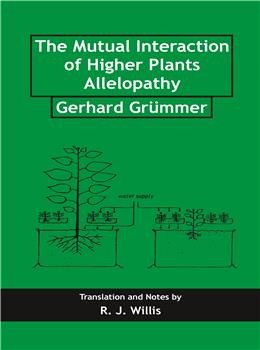The Mutual Interaction of Higher Plants Allelopathy
The Mutual Interaction of Higher Plants Allelopathy is backordered and will ship as soon as it is back in stock.
Couldn't load pickup availability
Genuine Products Guarantee
Genuine Products Guarantee
We guarantee 100% genuine products, and if proven otherwise, we will compensate you with 10 times the product's cost.
Delivery and Shipping
Delivery and Shipping
Products are generally ready for dispatch within 1 day and typically reach you in 3 to 5 days.
Book Details
-
Author: R.J. Willis
-
Publisher: Scientific Publishers
-
Language: English
-
Edition: 1st Edition
-
Year of Publication: 2008
-
ISBN: 9788172335489
-
Pages: 199
-
Cover: Hardcover
-
Size: 6.5 x 9.75 inches
-
Weight: 570 gm
About the Book
This book is an English translation of Die gegenseitige Beeinflussung der höherer Pflanzen Allelopathie by Gerhard Grümmer, originally published in 1955. Grümmer’s work was groundbreaking in the field of allelopathy, the study of the chemical interactions between plants. While Hans Molisch first coined the term "allelopathy" in 1937, Grümmer’s book brought together the scattered literature of plant chemical interactions into a comprehensive, coherent volume.
Grümmer's contribution has been often overlooked in the English-speaking world, but this English translation of his work aims to rectify that. His book offers important insights into allelopathic phenomena, including root excretions, pollen allelopathy, and the chemical interactions within mistletoes.
Grümmer, working in East Germany at a time when the Iron Curtain was descending, made significant strides in advancing the understanding of plant interactions that were largely ignored at the time. His work remains essential for researchers in the fields of plant ecology and allelopathy, making this volume an important addition to the literature.
The book also provides a historical perspective on the development of the science of allelopathy and highlights its importance in ecological research. This volume is essential for ecologists and researchers interested in the chemical dynamics between plants.





